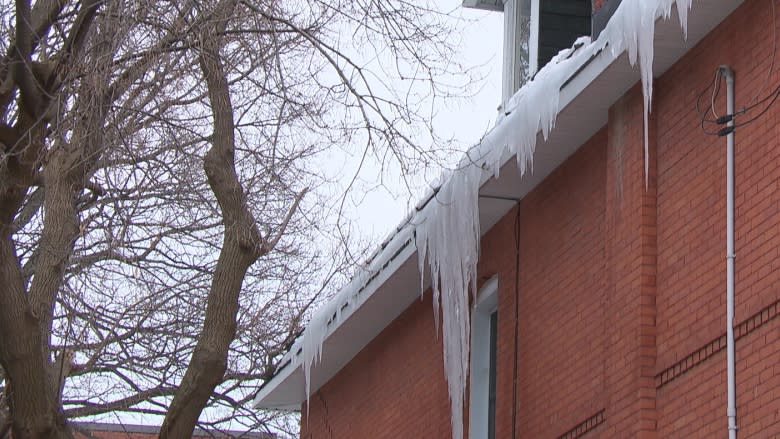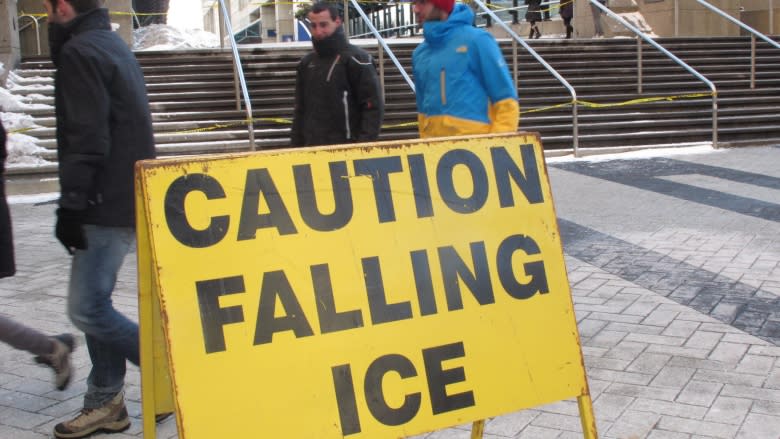Falling ice during spring thaw: What you need to know
Ottawa paramedics are warning pedestrians to "look up" to avoid falling ice, but the onus for dealing with dangerous icicles actually rests on the owners or occupants of buildings, according to city legislation.
On Tuesday, a 100-kilogram chunk of ice fell off a building near the intersection of Cooper and Kent streets, landing on the head of a 56-year-old man. He remained conscious and paramedics took him to hospital in serious but stable condition.
During spring thaws, ice can fall in a rather silent and unpredictable way.
An Ottawa bylaw puts the onus for dealing with icicles on building owners or occupants, stipulating they "shall keep the roofs of the building and surrounding lands free of accumulations of snow or ice that might create an accident hazard."
Jake Gravelle, a bylaw enforcement officer with the City of Ottawa, says officers will respond to buildings if a complaint is made and they will also patrol streets. The officers then make a subjective decision on whether ice accumulation is dangerous.
There is no warning and the fine for a violation is $365, Gravelle said. If city workers remove the ice for a building owner, the cost of doing so goes on the next property tax bill.
4 key causes of ice dams
Gravelle said March is the most dangerous time of year for ice accumulation.
That includes icicles and "ice dams," which are larger chunks of ice that form at the bottom of sloping roofs. Most often, it's poor insulation that ultimately causes these ice dams, where one part of the roof becomes warmer than another spot lower down.
Here's an explanation from research at the University of Waterloo in Waterloo, Ont.:
"If part of a roof becomes warm enough to melt snow that is lying on the roof, the snow will melt, and water will run down a sloped roof. If the water subsequently encounters a cold surface, the water will revert to ice. Therefore it can be said that the cause of ice dams is a difference in temperature on the roof surface where the upper part of the roof is warmer than the lower," the study reads.
According to the university, the four most common causes of ice dams are:
- Insufficient insulation.
- Air leaking into space below the roof membrane.
- A source of heat in roof, such as poorly insulated duct, hot-water piping, etc.
- Difference in snow thickness, especially when combined with solar radiation.
To find solutions to these problems, click here for the complete study from the University of Waterloo.
If you're walking by an older building with a sloped roof, be aware of heavy snow or ice accumulation and spot any dangers. Even though an occupant or owner is responsible, that might not prevent injury.




